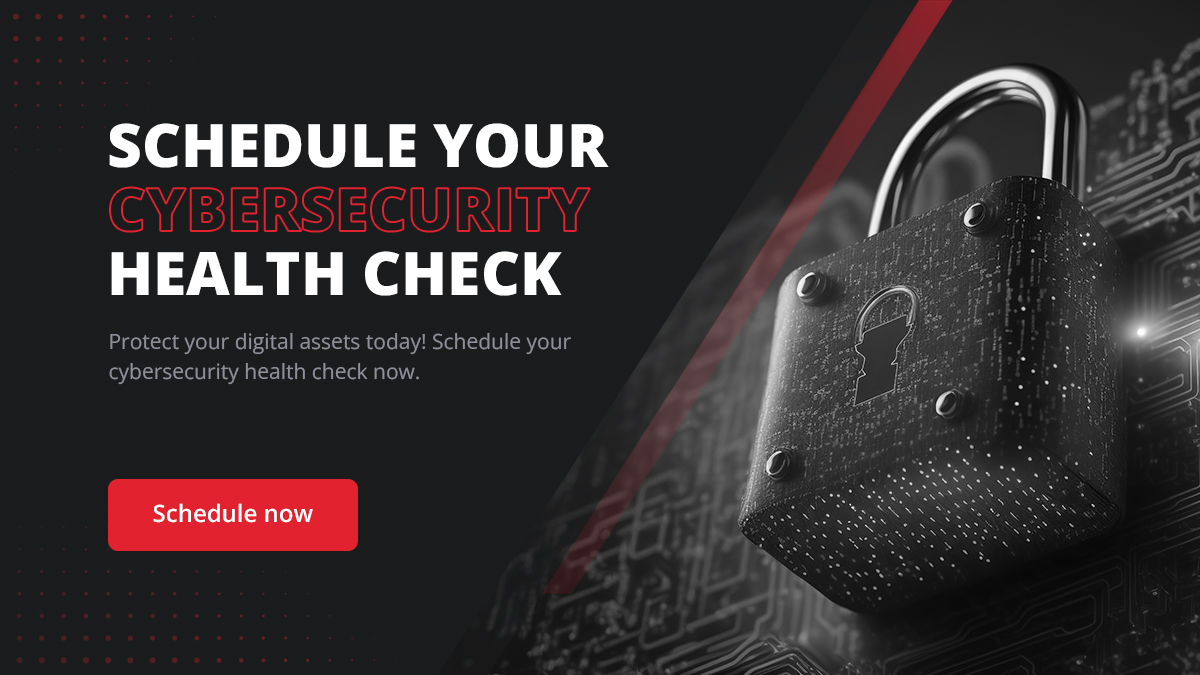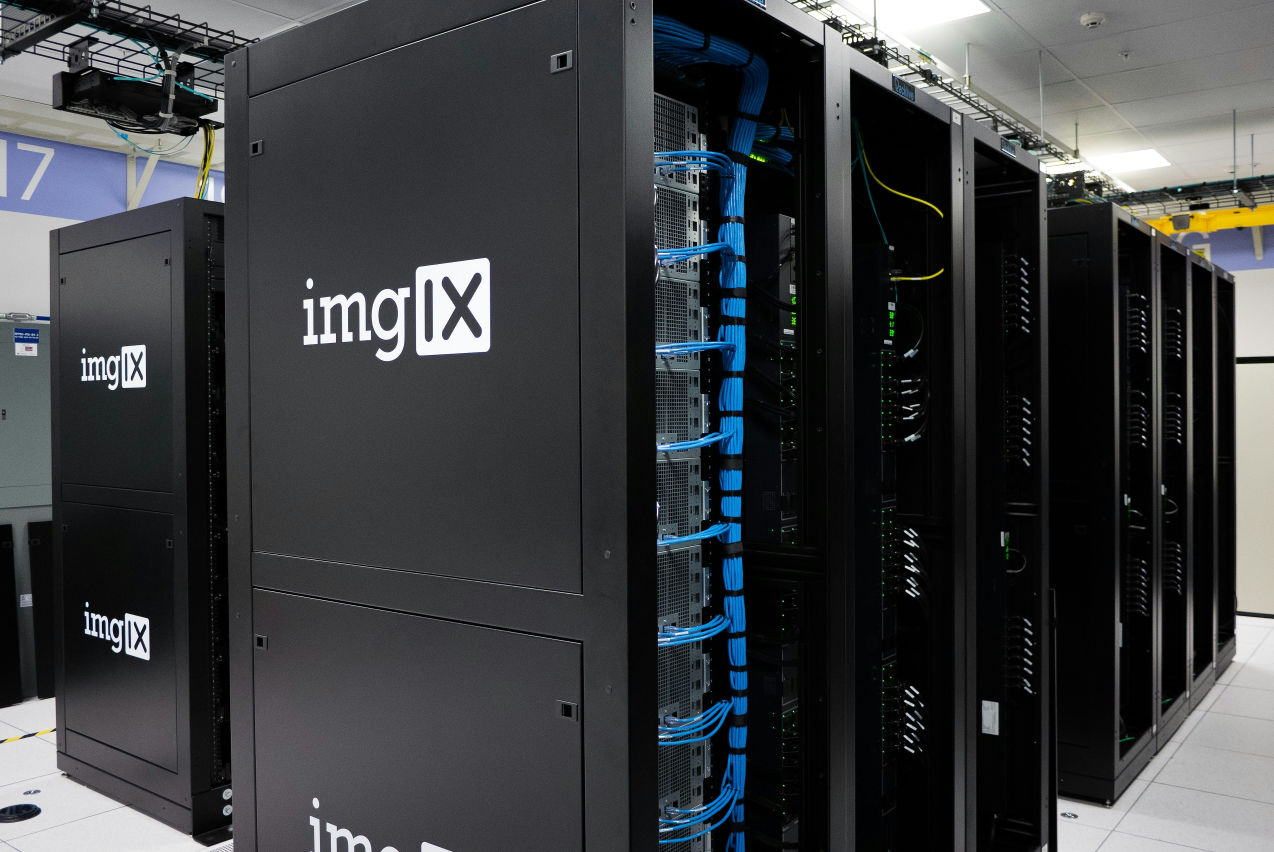Secure Your Big Data: Top Solutions for Data Security

Understanding Big Data Security: An Essential Guide
In the digital age, data is not just an asset but the backbone of innovation, strategy, and decision-making in organizations. As we delve deeper into the age of big data, the significance of securing this vast array of information becomes paramount. This guide aims to demystify big data security, providing insights into its definition, importance, and the mechanisms that underpin its safeguarding.
A Closer Look at Big Data Security
Definition of Big Data
Big data refers to exponentially growing data sets that are too large, too fast-changing, or too complex for traditional data processing methods. This data comes from myriad sources like social media, business transactions, sensors, and devices, presenting opportunities for insights and innovation but also posing significant security challenges.
What is Big Data Security?
Big data security is the collective term for the strategies, technologies, and practices employed to protect data from unauthorized access, cyber attacks, theft, or other forms of exploitation. It encompasses a range of measures, from securing the data itself to protecting the infrastructure and applications that process and store this data. Big data security aims to maintain the confidentiality, integrity, and availability of data, ensuring that it is accessible to authorized users and protected against misuse or breach.
Understanding big data security is crucial for any organization that deals with large volumes of data. As the digital landscape evolves and the volume of data grows, the complexity and sophistication of security threats also increase. Therefore, organizations must adopt a proactive and comprehensive approach to secure their big data assets, safeguarding not just the data but also the reputation and trust of the organization.
The Importance of Security in Big Data
The significance of security in big data cannot be overstated. As organizations increasingly rely on massive datasets for critical decision-making, the integrity, confidentiality, and availability of this data become vital. Big data security ensures that valuable insights derived from data analytics are reliable and not compromised by malicious actors. It protects against financial losses, safeguards intellectual property, and maintains the trust of customers and stakeholders. In essence, robust big data security is not just about protecting data; it's about securing the very foundation upon which modern businesses operate and make strategic decisions.
Challenges and Risks Associated with Big Data Security
The vastness and complexity of big data introduce a unique set of security challenges and risks. The sheer volume of data makes it a tempting target for cybercriminals, while the diversity of data types and sources complicates its protection. One major challenge is ensuring data privacy, especially when dealing with personal information subject to regulations like GDPR or HIPAA. The dynamic nature of big data environments, with data constantly being collected, processed, and analyzed, requires agile and adaptive security strategies.
Moreover, integrating big data from disparate sources can introduce vulnerabilities, particularly if the security standards of these sources are inconsistent. Advanced persistent threats (APTs), which target specific data or systems over extended periods, pose a significant risk to big data repositories. These sophisticated attacks can lead to substantial data and security breaches, causing not only immediate financial losses but also long-term reputational damage.
Organizations must navigate these challenges with a comprehensive security approach that includes robust encryption, access controls, real-time monitoring, and incident response strategies. Addressing these challenges head-on is crucial for harnessing the true potential of big data while minimizing the risks associated with its security.
Challenges of Big Data Security
Big data's defining characteristics—volume, velocity, and variety—present unique security challenges that organizations must navigate to safeguard their data assets effectively. These three Vs are not just attributes of big data but are also the source of significant security concerns that require specialized strategies and solutions.

Volume: The Scale of Data
The sheer volume of data that constitutes big data is staggering. Organizations collect, store, and process petabytes or even exabytes of data. This immense scale presents a formidable challenge for security teams. Traditional security tools, designed for smaller, more manageable datasets, often fall short when it comes to the vastness of big data.
- Storage Security: The large volume of data necessitates extensive storage solutions, which can be distributed across multiple locations and environments. Securing this data requires robust encryption protocols and access controls that can operate at scale without compromising performance.
- Data At Rest vs. Data In Motion: Protecting big data involves securing both data at rest and data in motion. The volume of data exacerbates the challenge as ensuring encryption and secure transmission becomes more complex and resource-intensive.
- Scalability of Security Measures: Security measures must scale in tandem with the data. As data volume grows, the security infrastructure must adapt, ensuring that protections remain effective and efficient without becoming a bottleneck.
Velocity: The Speed of Data
Velocity refers to the speed at which data is generated, collected, and analyzed. In many cases, data is created in real time, streaming from various sources like IoT devices, online transactions, and social media interactions.
- Real-time Security Monitoring: The rapid generation and processing of data require real-time security monitoring and response mechanisms. Delays in detecting a breach can lead to significant data loss or compromise.
- Automated Threat Detection: Manual threat detection is impractical in high-velocity data environments. Automated tools that can analyze data streams in real-time, detect anomalies, and initiate responses are crucial.
- Adapting to Changing Data Patterns: As data flows rapidly, patterns can change, and new security vulnerabilities may emerge. Security systems must be dynamic, adapting to evolving data streams and identifying threats as they arise.
Variety: The Diversity of Data
Big data encompasses a wide variety of data types, from structured data in traditional databases to unstructured data like text, images, and videos. This diversity complicates security efforts, as different data types may require distinct protection strategies.
- Structured vs. Unstructured Data: Structured data can be more straightforward to secure, given its organized format. Unstructured data, being more amorphous, poses a significant challenge, particularly when it comes to classification, analysis, and protection.
- Data Source Security: Data can originate from myriad sources, each with its security considerations. Ensuring the security and integrity of data from diverse sources is a complex task that requires a nuanced approach.
- Compliance and Data Sensitivity: The variety of data also means a mix of sensitivity levels and regulatory requirements. Identifying and classifying data based on its sensitivity and the applicable compliance mandates is vital for applying appropriate security measures.
The challenges posed by the volume, velocity, and variety of big data demand a multifaceted and robust security strategy. Organizations must deploy scalable, real-time, and versatile security measures to protect their data assets effectively. Adapting to the dynamic nature of big data, staying ahead of emerging threats, and ensuring compliance with relevant regulations are critical components of a comprehensive big data security framework.
Big Data Security vs Traditional Data Security
The landscape of big data security differs significantly from traditional data security, reflecting the unique characteristics and challenges associated with managing and protecting vast datasets. While traditional data security focuses on safeguarding smaller, more structured data within relatively controlled environments, big data security must contend with a broader range of issues stemming from the scale, speed, and diversity of data.
Security Measures
- Advanced Analytics: Big data security leverages advanced analytics and machine learning to detect threats and anomalies, a step beyond the more rule-based security measures used in traditional data security.
- Data Provenance: Tracking the origin and history of data is more complex in big data systems but crucial for ensuring data integrity and security. Traditional data systems, with their simpler workflows and data paths, face fewer challenges in maintaining data provenance.
Compliance and Privacy
- Regulatory Landscape: The diverse and dynamic nature of big data can complicate compliance with data protection regulations, which are designed around more static data environments. Ensuring privacy and adhering to regulations like GDPR or HIPAA requires a nuanced approach in big data settings.
- Anonymization: The process of anonymizing data to protect individual privacy is more complex in big data due to the variety and volume of data, which can make re-identification easier if not handled correctly.
While there is an overlap in the principles underpinning big data security and traditional data security, the former requires a more dynamic, scalable, and multifaceted approach. As organizations continue to embrace big data, evolving their security practices to address these distinct challenges will be crucial for safeguarding their data assets and maintaining trust in an increasingly data-driven world.

Advanced Persistent Threats (APTs) and Big Data
Advanced Persistent Threats (APTs) represent a significant and sophisticated challenge in big data security. These threats are characterized by their stealthy, continuous, and targeted nature, often orchestrated by well-resourced and skilled adversaries. The intersection of APTs and big data is particularly concerning due to the valuable insights and competitive advantages that large datasets offer, making them attractive targets for such threats.
Characteristics of APTs
- Stealth and Persistence: APTs infiltrate networks without detection, often for extended periods. This stealthiness allows attackers to gradually deepen their access and control over the network, extracting valuable data without raising alarms.
- Targeted Attacks: Unlike broad, scattergun cyberattacks, APTs are typically targeted at specific organizations or sectors, often with the intent of stealing sensitive information or disrupting critical operations.
- Resourcefulness: The entities behind APTs usually have significant resources, including skilled personnel, sophisticated tools, and sometimes state-level support, enabling them to launch and sustain complex attacks.
Impact on Big Data
- Data Exfiltration: Given the volume and value of information in big data repositories, they are prime targets for APTs. Attackers can exfiltrate sensitive data, leading to significant intellectual property loss, financial damage, and reputational harm.
- Data Integrity Attacks: Beyond theft, APTs can alter or corrupt big data, affecting decision-making and operations. Such integrity attacks can be subtle and insidious, with long-term consequences.
- Surveillance and Espionage: APTs can enable sustained surveillance, allowing attackers to monitor an organization's activities and strategies. For sectors like finance, defense, or healthcare, where big data drives strategic decisions, this can have profound implications.
Addressing APTs in Big Data
- Enhanced Detection and Monitoring: Implementing advanced monitoring tools and techniques, including anomaly detection and behavior analysis, can help identify the subtle signs of APT activity within big data environments.
- Segmentation and Access Controls: By segmenting networks and enforcing strict access controls, organizations can limit the movement of APT actors within their networks, reducing the risk of widespread data compromise.
- Incident Response and Forensics: Preparing for APTs involves not only prevention but also response. Organizations should have detailed incident response plans and forensic capabilities to investigate and mitigate APT incidents effectively.
In summary, APTs pose a nuanced threat to big data security, capitalizing on the scale and richness of big data to conduct espionage, data theft, or sabotage. Addressing these threats requires a blend of sophisticated detection mechanisms, robust access controls, and comprehensive incident response strategies. As big data grows in scope and significance, understanding and countering APTs will be vital for safeguarding this critical digital asset.
Core Principles of Big Data Security
Within the vast and intricate domain of big data, certain core principles stand out as essential for ensuring the security and integrity of data systems. Data privacy and data management and storage security are two pillars that uphold the sanctity of big data environments.
Data Privacy
Data privacy in big data is about safeguarding personal and sensitive information from unauthorized access and ensuring data usage complies with legal and ethical standards. In the context of big data, this task is magnified due to the sheer volume and variety of data collected and processed. Ensuring data privacy involves a multifaceted approach, where organizations must not only adhere to regulations but also foster a culture of privacy that permeates all aspects of data handling. This includes implementing stringent policies for data access, using advanced techniques for data anonymization, and ensuring that data usage is transparent and accountable. The goal is to maintain the trust of data subjects and stakeholders while harnessing the power of big data for analysis and decision-making.
Data Management and Storage Security
Securing the management and storage of big data is a complex endeavor that encompasses various aspects of data handling. From the moment data is captured to when it's stored, processed, and eventually retired, each step requires a layer of security to prevent unauthorized access, data breaches, and loss. Data management in a big data context involves organizing data in a way that maintains its integrity, availability, and confidentiality. It requires sophisticated techniques to ensure that data remains accurate and consistent, even as it scales across various storage solutions, whether on-premises or in the cloud.
Storage security, on the other hand, involves protecting data at rest, in transit, and during processing. This is crucial in big data environments where data often traverses multiple systems and networks. Encryption plays a key role here, ensuring that even if data is intercepted or accessed without authorization, it remains unintelligible and useless to attackers. Additionally, robust access controls and authentication mechanisms ensure that only authorized personnel can access or manipulate the data, thereby maintaining its confidentiality and integrity.
Essential Aspects of Big Data Security
In big data security, several key aspects must be diligently addressed to ensure the comprehensive protection of data assets. Context security, mobile device security, and access control stand out as pivotal elements in a well-rounded big data security strategy.
Context Security
Context security refers to the practice of understanding the "context" or the environment in which data is accessed and processed. This approach goes beyond traditional security measures by incorporating contextual information—like user identity, the nature of the data, the time of access, and the location—from which the data is being accessed. By analyzing this context, organizations can detect unusual patterns or inappropriate access that might otherwise go unnoticed. For instance, if a user attempts to access sensitive data at an unusual time or from an unfamiliar location, a context-aware security system can flag this as a potential security threat. This nuanced understanding of context allows for more dynamic and responsive security measures, tailoring the protection mechanisms to the specific scenarios in which data is used and accessed.

Mobile Device Security
With the proliferation of mobile technology, mobile devices have become a critical entry point to big data systems. These devices can access, transmit, and sometimes store vast amounts of data, making them a potential target for security breaches. Ensuring mobile device security involves implementing stringent security protocols, encryption, and secure authentication methods. Additionally, organizations must consider the unique challenges posed by mobile devices, such as their susceptibility to loss or theft and the potential for insecure network connections. Effective mobile device management (MDM) solutions can help monitor and control the devices that access big data resources, ensuring that they comply with the organization's security policies and are not compromised.
Access Control
Access control is a fundamental aspect of data security that involves defining who can access specific data sets and under what conditions. In big data, effective access control is critical due to the vast amounts of diverse data that organizations handle. This involves not only authenticating users but also ensuring that they have the appropriate level of authorization to access the data they need for their roles. Access control mechanisms must be granular enough to differentiate access rights at a detailed level, ensuring that users can access only the data they are permitted to, thus minimizing the risk of unauthorized data exposure. Moreover, access control in big data environments should be dynamic and able to adapt to changes in user roles, data sensitivity, and the evolving threat landscape.
Data Privacy
Data privacy in the context of big data is not just about adhering to laws and regulations; it's about establishing trust with users, customers, and stakeholders by responsibly managing the data entrusted to the organization. In big data environments, where data is collected and analyzed at an unprecedented scale, ensuring privacy becomes a complex endeavor. It involves the application of rigorous data handling practices, effective anonymization techniques, consent management, and transparent data usage policies. Organizations need to implement comprehensive data governance frameworks that address the multifaceted nature of big data, ensuring that privacy is maintained without stifling the potential for valuable insights.
Data Breach and Reputational Damage
A data breach in a big data environment can have far-reaching consequences, not just in terms of immediate financial loss or regulatory penalties but also regarding the long-term reputation of the organization. The scale and sensitivity of big data involved in such breaches make such breaches particularly impactful. When an organization suffers a data breach, it's not just the loss of data that they contend with; there's a significant erosion of trust among customers, partners, and the market at large. This reputational damage can be profound and enduring, often more challenging to remediate than the direct costs associated with the breach. Organizations must, therefore, not only focus on preventing breaches through robust security measures but also on developing comprehensive incident response plans that include strategies for mitigating reputational harm and rebuilding trust in the aftermath of a breach.
Tools and Solutions for Big Data Security
Navigating the complex landscape of big data security necessitates deploying advanced tools and solutions designed to safeguard data across various vectors. Key among these are security analytics, security incident response, and anomaly detection systems, each playing a pivotal role in fortifying big data environments.
Security Analytics
Security analytics tools are vital in big data, offering the ability to sift through vast datasets to identify potential security threats and vulnerabilities. These tools leverage data science and machine learning algorithms to analyze, interpret, and make sense of large volumes of data, providing insights that traditional security measures might miss. By integrating various data sources, security analytics can offer a comprehensive view of an organization's security posture, highlighting trends, patterns, and anomalies that could indicate potential threats. This proactive approach enables organizations to anticipate and mitigate security risks before they escalate, enhancing the overall security of big data ecosystems.
Security Incident Response
In big data, the complexity and scale of potential security incidents necessitate a robust and well-orchestrated incident response strategy. Security incident response tools and frameworks help organizations prepare for, detect, respond to, and recover from security breaches or incidents. These tools provide mechanisms for early detection of breaches, streamline the coordination of response efforts, and ensure that incidents are addressed promptly and effectively. By having a structured approach to incident response, organizations can minimize the impact of security incidents, ensuring that they can quickly return to normal operations while reducing the potential for reputational damage.

Anomaly Detection Systems
Anomaly detection systems are crucial for identifying unusual patterns or behaviors in data that may signify a security threat. In big data environments, where data flows are vast and continuous, these systems use advanced algorithms to monitor data in real-time, detecting deviations from normal behavior. This capability is particularly important for identifying sophisticated cyber threats that may not trigger traditional security alarms, such as subtle exfiltration attempts or insider threats. By detecting anomalies early, these systems enable organizations to respond swiftly to potential security issues, thereby reducing the risk of significant data breaches or losses.
Encryption and Tokenization
Encryption is a fundamental tool in big data security, transforming readable data into an encoded format that can only be accessed or decrypted with the correct key. Its importance in big data lies in its ability to protect data at rest, in transit, and during processing, ensuring that even if data is intercepted or accessed by unauthorized entities, it remains incomprehensible and secure. On the other hand, tokenization replaces sensitive data elements with non-sensitive equivalents, known as tokens, which have no exploitable value. This method is particularly useful in big data environments for protecting specific pieces of sensitive information while allowing the rest of the data to be processed and analyzed in its natural form. Together, encryption and tokenization provide a robust layer of security, safeguarding data across various stages of its lifecycle in a big data ecosystem.
Machine Learning in Big Data Security
The integration of machine learning into big data security represents a significant advancement in the ability to detect, analyze, and respond to threats. Machine learning algorithms can process vast amounts of data at speeds and scales impractical for human analysts, identifying patterns, anomalies, and potential threats that might go unnoticed otherwise. These algorithms can adapt over time, learning from new data and evolving security threats, which enhances their effectiveness in detecting and mitigating risks. In big data security, machine learning can be applied in numerous ways, such as predicting and identifying potential security incidents, automating threat detection processes, and enhancing the accuracy of anomaly detection systems. By leveraging machine learning, organizations can significantly improve their security posture, enabling more proactive and data-driven security strategies in their big data environments.
Good Practices for Big Data Security
Ensuring the security of big data is not just about deploying the right tools and technologies; it also involves adhering to best practices that create a robust security culture within an organization. Two cornerstone practices in big data security are implementing strong access control and conducting regular security audits and compliance checks.
Implementing Strong Access Control
Strong access control is essential in protecting big data assets. It ensures that only authorized users have the ability to access specific data sets, applications, or resources based on their roles and necessities. Implementing robust access control mechanisms involves several key steps:
- User Authentication: This is the first line of defense in access control, ensuring that only verified users can gain access to the system. Multi-factor authentication (MFA) adds an extra layer of security, requiring users to provide two or more verification factors to gain access.
- Role-Based Access Control (RBAC): RBAC is crucial in a big data context. It involves assigning users to specific roles and granting permissions to those roles rather than individuals. This ensures that users have access only to the data and resources necessary for their job functions.
- Least Privilege Principle: This principle dictates that users should be granted the minimum levels of access – or permissions – needed to perform their job functions. This minimizes the risk of accidental or deliberate misuse of data.
- Continuous Monitoring and Review: Access rights and roles should be regularly reviewed and adjusted based on changes in job functions, employment status, or emerging security threats.

Regular Security Audits and Compliance Checks
Regularly auditing security practices and ensuring compliance with relevant regulations are critical for maintaining the integrity and confidentiality of big data. These audits help identify vulnerabilities, assess the effectiveness of existing security measures, and ensure that data handling practices comply with legal and industry standards.
- Security Audits: Regular security audits involve a comprehensive examination of an organization's security infrastructure and practices. These audits help identify vulnerabilities and ensure that security measures are up-to-date and effective.
- Compliance Checks: With the increasing number of regulations governing data protection and privacy, such as GDPR, HIPAA, or CCPA, it's crucial for organizations to regularly check their compliance status. Non-compliance can result in hefty fines and damage to reputation.
- Risk Assessment: Part of regular audits should involve assessing the potential risks to the organization's big data. This includes identifying and evaluating the threats and vulnerabilities that could impact the confidentiality, integrity, and availability of data.
- Incident Response Plan: Regular audits should also review and update the organization's incident response plan, ensuring that it remains effective and that team members know their roles in the event of a security breach.
Employee Training to Enhance Big Data Security
Employee training programs are essential for instilling a culture of security awareness within an organization. Such programs ensure that all employees, not just the IT staff, understand the importance of big data security and their role in maintaining it. Here's how effective training can enhance big data security:
- Comprehensive Security Awareness: Training programs should cover a broad range of topics, including the fundamentals of cybersecurity, the specific threats to big data, and the best practices for mitigating these threats. This comprehensive approach ensures that employees are aware of the various ways in which security breaches can occur and the steps they can take to prevent them.
- Role-Specific Training: Different roles within an organization interact with data in different ways, and as such, training should be tailored to the specific needs and responsibilities of various roles. For instance, a data scientist might need in-depth training on securing data analytics processes, while a marketing professional might require guidance on safely handling customer data.
- Regular Updates and Refresher Courses: The landscape of cybersecurity is continually evolving, with new threats emerging regularly. Training programs should be updated frequently to reflect the latest security challenges and best practices. Additionally, refresher courses can help ensure that the principles of data security remain fresh in employees' minds.
- Practical Exercises and Simulations: Beyond theoretical knowledge, practical exercises such as security drills or simulations of phishing attacks can help employees apply what they've learned in real-world scenarios. This experiential learning can be invaluable in preparing employees to respond effectively to actual security incidents.
- Promoting a Culture of Security: Training should aim to foster a culture where security is everyone's responsibility. Encouraging employees to report suspicious activities, share knowledge, and collaborate on security issues can create a proactive environment where security is a shared priority.
By investing in comprehensive and ongoing training, employees can be turned into a Human Firewall to act as a layer of security defense against cyber threats; organizations can significantly enhance the security of their big data assets. Well-informed employees are less likely to fall prey to phishing attacks, misuse data, or inadvertently expose the organization to risks. In the context of big data, where the volume and complexity of data can amplify the consequences of security lapses, empowering every team member with the knowledge and tools to safeguard data is a key pillar of a robust security strategy.
Regulatory Compliance and Best Practices
Adhering to regulatory compliance and best practices is not just about legal obligation in big data security; it's a crucial element of trust and integrity. Regulations like the General Data Protection Regulation (GDPR) and guidelines from the Federal Trade Commission (FTC) play pivotal roles in shaping how organizations handle big data, especially concerning data protection.
GDPR and Data Protection
The GDPR is a comprehensive data protection regulation that applies to all organizations operating within the EU and those outside the EU that offer goods or services to EU citizens. It emphasizes the principles of transparency, accountability, and individuals' rights over their data.
- Consent and Individual Rights: Under GDPR, organizations must obtain explicit consent to process personal data. Individuals have the right to access their data, correct inaccuracies, and request data deletion, among other rights.
- Data Minimization and Purpose Limitation: GDPR requires that only the necessary data for a specific purpose be collected and processed. Organizations must clearly define why they are collecting data and adhere strictly to those purposes.
- Data Protection Impact Assessments (DPIAs): For processes that pose high risks to individuals' data rights, GDPR mandates conducting DPIAs to identify and mitigate these risks.
- Data Breach Notifications: Organizations must report data breaches to the relevant authority within 72 hours of becoming aware of them, underscoring the need for robust incident detection and response mechanisms.
FTC and Data Protection
In the United States, the Federal Trade Commission (FTC) plays a significant role in enforcing data protection standards, albeit in a more fragmented regulatory landscape compared to the EU. The FTC's guidelines and actions focus on preventing deceptive and unfair business practices regarding data security.
- Consumer Privacy: The FTC advocates for transparent data practices, requiring organizations to clearly communicate how they collect, use, and share consumer data.
- Data Security Programs: The FTC expects organizations to implement reasonable data security programs that are appropriate to their size and the nature of the data they handle. This includes maintaining secure networks, regularly auditing security practices, and ensuring data is only accessible to authorized individuals.
- Breach Response: The FTC looks at how organizations respond to data breaches, evaluating the timeliness and effectiveness of their actions. Companies are expected to notify affected individuals and take steps to mitigate the impact of a breach.
Compliance with GDPR, FTC guidelines, and other relevant regulations is not just about avoiding fines or legal challenges; it's about building a foundation of trust with customers, partners, and the broader public. By adhering to these regulations and embedding data protection best practices into their operations, organizations can not only enhance their big data security but also establish themselves as responsible stewards of the data they hold.
Confidentiality, Integrity, and Availability
The triad of confidentiality, integrity, and availability, often referred to as the CIA triad, is a cornerstone of information security, including in the realm of big data.
- Confidentiality: Ensuring that data is accessible only to those authorized to view it is fundamental to maintaining its confidentiality. This involves implementing stringent access controls, encryption, and other security measures to prevent unauthorized access or disclosure of sensitive information.
- Integrity: Data integrity refers to maintaining and assuring the accuracy and completeness of data. This means protecting data from being altered or tampered with by unauthorized individuals. It involves measures like checksums, version controls, and audit trails to detect and mitigate any unauthorized changes to the data.
- Availability: Data must be accessible to authorized users when needed, which means ensuring that systems, networks, and data are available and functioning correctly. This involves implementing robust disaster recovery and business continuity plans to ensure data can be recovered and made available in the event of an incident or failure.
Who Is Responsible For Big Data Security?
In big data security, responsibility doesn't rest with a single individual or department; it's a shared obligation across various roles within an organization.
- Leadership and Governance: Senior management and board members play a crucial role in establishing the importance of big data security within the organization, ensuring there are adequate resources and a culture that prioritizes data protection.
- IT and Security Teams: These teams are directly responsible for implementing and managing security measures, monitoring systems for breaches, and responding to incidents. They ensure that the technical aspects of data security are addressed and maintained.
- Data Owners and Users: Individuals who work with the data daily are responsible for adhering to security policies and procedures. This includes understanding the importance of data protection, following best practices, and reporting any security incidents or vulnerabilities.
- Compliance and Legal Teams: These teams ensure that the organization's data handling practices comply with relevant laws, regulations, and standards, helping navigate the complex landscape of data protection requirements.
In essence, big data security is a collective responsibility that requires coordination and collaboration across the entire organization. By understanding the roles and responsibilities at each level and adhering to the fundamental principles of confidentiality, integrity, and availability, organizations can create a robust framework for protecting their valuable big data assets.

Let RedZone Technologies Help You in Securing Your Data and Get Compliant
In today's digital landscape, where data breaches are becoming increasingly sophisticated and frequent, safeguarding your big data is paramount. RedZone Technologies is at the forefront of offering cutting-edge solutions tailored to enhance your big data security and ensure compliance with the latest regulations.
Big Data Security Solutions from RedZone Technologies
RedZone Technologies provides a comprehensive suite of big data security solutions designed to protect your data assets from evolving threats while ensuring compliance with industry standards and regulations.
- Customized Security Strategies: Understanding that each organization has unique security needs, RedZone offers customized security strategies that align with your specific business objectives and data landscape. This personalized approach ensures that your big data assets are protected in a manner that best suits your organization's requirements.
- Advanced Protection Tools: Utilizing state-of-the-art security tools and technologies, RedZone ensures the safeguarding of your big data from both external and internal threats. From encryption and tokenization to advanced threat detection systems, our solutions are designed to provide comprehensive protection.
- Compliance Expertise: With a deep understanding of regulatory requirements and industry standards, RedZone can guide your organization through the complexities of compliance. Whether you're navigating GDPR, HIPAA, or any other regulatory framework, our expertise ensures that your big data practices are not only secure but also fully compliant.
- Incident Response and Recovery: In the event of a data breach or security incident, RedZone's incident response team is equipped to act swiftly to mitigate damages, identify the breach's source, and implement recovery strategies. Our proactive approach to incident management helps minimize downtime and ensures a rapid return to normal operations.
- Ongoing Support and Training: RedZone believes in empowering organizations through knowledge. We offer ongoing support and training to ensure that your team is equipped with the knowledge and skills to maintain and enhance your big data security over time.
Virtual Security Operations
Our Virtual Security Operations (VSO) service provides organizations access to advanced security operations capabilities without requiring substantial in-house investment in technology and specialized personnel. The VSO service includes continuous monitoring of your digital environment, detection of potential threats, and rapid response to incidents.
Key Partnerships
RedZone Technologies recognizes the value of collaboration and partnership in enhancing big data security. By establishing key partnerships with industry leaders and technology innovators, RedZone ensures that clients have access to the most advanced and effective security solutions available. These partnerships enable us to offer a broader range of tools and services, ensuring that your big data environment is secure, compliant, and optimized for performance.
- Technology Alliances: RedZone collaborates with leading technology providers, integrating cutting-edge security products and services into our solutions. These alliances ensure that our clients benefit from the latest advancements in data protection, threat detection, and compliance management.
- Industry Collaborations: By working closely with various security organizations, RedZone stays at the forefront of evolving security standards and practices. These collaborations help us to understand industry-specific challenges better and tailor our solutions to meet those unique needs.
Featured Solutions
RedZone Technologies offers a range of featured solutions designed to address the multifaceted challenges of big data security. These solutions are crafted to provide comprehensive protection, ensuring the confidentiality, integrity, and availability of your data.
- Data Encryption and Tokenization: Our solutions include advanced encryption and tokenization services, safeguarding data at rest, in transit, and during processing. By rendering data unreadable to unauthorized users, these services play a critical role in protecting sensitive information.
- Threat Intelligence and Analytics: RedZone's threat intelligence services provide actionable insights to identify and mitigate potential security threats. Combined with advanced analytics, our solutions offer predictive capabilities to detect unusual patterns and anomalies indicative of security risks.
- Compliance Management: Our compliance management solutions are designed to simplify the process of adhering to regulatory requirements. From GDPR to HIPAA, our tools and services help ensure that your big data practices are in full compliance with the necessary legal and industry standards.
- Incident Response and Forensics: RedZone offers comprehensive incident response and forensic analysis services to address security breaches swiftly. Our expert team works diligently to contain incidents, minimize impact, and investigate the root cause to prevent future occurrences.
- Security Training and Awareness: We provide training programs and awareness campaigns to enhance the security knowledge of your team. Empowering employees with the understanding of best practices and potential threats is key to fostering a proactive security culture.
Explore the options at RedZone Products Featuring a selection of security products tailored to address specific challenges in safeguarding digital assets.
Conclusion
In the era of digital transformation, big data has emerged as a crucial asset for organizations, driving insights and competitive advantage. However, the immense value of big data also makes it a prime target for cyber threats, emphasizing the need for robust big data security measures. As we have explored, securing big data encompasses a spectrum of practices, from implementing foundational security principles like confidentiality, integrity, and availability, to deploying advanced tools and technologies like encryption, anomaly detection, and machine learning.
RedZone Technologies stands at the forefront of addressing these challenges, offering a suite of solutions and expertise to help organizations navigate the complexities of big data security. With our tailored security strategies, cutting-edge tools, compliance expertise, and a commitment to partnership and innovation, RedZone empowers businesses to leverage the full potential of their big data assets securely and responsibly.
The journey to secure big data is ongoing and requires a commitment to continuous improvement and adaptation to emerging threats and evolving regulatory landscapes. By prioritizing data security and compliance, organizations can not only protect themselves against data breaches and cyber threats but also build trust with customers and stakeholders, ensuring their long-term success and resilience in the digital age.
Embracing a proactive and comprehensive approach to big data security, guided by experts like RedZone Technologies, is essential for any organization looking to harness the power of big data while safeguarding its integrity and value. In doing so, businesses can confidently step into the future, leveraging their data assets to drive innovation, efficiency, and growth in an increasingly data-driven world.
Our Resources include whitepapers, case studies, blogs, and webinars that cover a wide range of cybersecurity topics. For more information on securing your organization's future with proactive cybersecurity measures, Contact us today.
FAQs
How Can Small Businesses Implement Big Data Security on a Limited Budget?
Small businesses, despite budget constraints, can effectively implement big data security by focusing on key areas that offer the most significant protection without substantial investment. Prioritizing data encryption, access control, and employee training can create a strong security foundation. Small businesses can start by identifying their most critical data assets and applying encryption to protect this data both at rest and in transit. Implementing strong access controls ensures that only authorized personnel can access sensitive information, minimizing the risk of internal and external breaches. Additionally, investing in employee training on security best practices is a cost-effective measure that can significantly reduce the risk of data breaches caused by human error. Utilizing open-source or cost-effective security tools that align with the business's specific needs can also provide robust security without a hefty price tag. By focusing on these fundamental aspects, small businesses can create a resilient big data security posture, even with limited financial resources.
How Can Companies Measure the Effectiveness of Their Big Data Security Strategies?
Measuring the effectiveness of big data security strategies involves a combination of continuous monitoring, regular audits, and the analysis of security incidents. Companies should establish key performance indicators (KPIs) related to security, such as the number of detected threats, response times to incidents, and the results of regular vulnerability assessments. Regular security audits provide a comprehensive view of the organization's security posture, highlighting areas of strength and those needing improvement. Analyzing incidents post-resolution can offer valuable insights into the real-world effectiveness of security measures, identifying patterns or weaknesses that could be addressed to prevent future breaches. Additionally, staying attuned to the evolving landscape of cybersecurity threats and adapting strategies accordingly is crucial for maintaining effective security. By regularly assessing these metrics and adapting their strategies based on findings, companies can ensure their big data security measures are robust and responsive to the dynamic nature of cyber threats.
What Steps Should a Company Take Immediately Following a Big Data Security Breach?
When a company experiences a big data security breach, immediate action is crucial to mitigate the impact and prevent further damage. The first step is identifying and isolating the affected systems to contain the breach. This involves disconnecting the compromised systems from the network to prevent the spread of the breach. Next, the company should assess the scope and impact of the breach to understand which data has been compromised and the potential consequences. Communicating transparently with stakeholders, including customers, employees, and regulatory bodies, is essential to maintain trust and comply with legal obligations. The company should also engage with cybersecurity experts to investigate the breach, identify the cause, and implement measures to prevent future incidents. Documenting every step taken in response to the breach is vital for post-incident analysis and compliance with regulatory requirements. After addressing the immediate aftermath, the company should review and strengthen its security policies and practices to enhance its resilience against future threats.
What Are the Best Practices for Securing Big Data in Cloud Environments?
Securing big data in cloud environments involves several best practices that ensure the protection of data assets stored and processed in the cloud. Firstly, implementing robust access controls is crucial to ensure that only authorized users can access sensitive data. Encryption of data in transit and at rest provides a fundamental layer of security, protecting data from unauthorized access even if the cloud environment is compromised. Regularly monitoring and auditing cloud environments help detect potential security threats and ensure compliance with security policies. It's also important to choose a reputable cloud service provider that offers strong security measures and complies with industry-standard security certifications and regulations. Additionally, companies should have a clear understanding of the shared responsibility model in cloud security, knowing what aspects of security are managed by the provider and what responsibilities lie with the company. Data backup and recovery strategies are essential in cloud environments to ensure data can be restored in the event of a breach or data loss. By adhering to these best practices, companies can leverage the benefits of cloud environments for big data while minimizing security risks.
 Security Updates
Security UpdatesUnderstanding IT Compliance: Scope, Benefits, and Challenges
Discover what IT compliance is, its importance, benefits, risks of non-compliance, frameworks, and how to achieve robust IT compliance in your organization.
 Security Updates
Security UpdatesImplement Secure Browsing with Powerful SSL Decryption
Explore the essentials of SSL decryption, its importance, challenges, and best practices for enhancing security and compliance for business in a detailed guide
 Security Updates
Security UpdatesTransitioning from Proxy Firewalls to Endpoint Security
Explore the evolution from proxy firewalls to endpoint security, enhanced threat detection, data encryption, and comprehensive protection for modern networks.
 Security Updates
Security UpdatesExpert IT Risk Assessment: Protect Your Business Today!
Mitigate potential IT threats with our comprehensive risk assessment guide, ensuring your digital infrastructure. Ensure your business is secure an...
 Security Updates
Security UpdatesEssential Guide to Best Practices in Compliance Security
Explore essential strategies for compliance security in this comprehensive guide. Learn about safeguarding your business and meeting regulatory sta...
 Security Updates
Security UpdatesSecure Your Data with Expert Cloud Database Solutions
Learn efficient solutions and secure your cloud databases with encryption and compliance features, ensuring data safety and privacy across all plat...
 Security Updates
Security UpdatesA Guide to Cloud Network Technology: Benefits and Types
Unlock the potential of cloud network technology for seamless connectivity. Learn and scale solutions that drive business innovation and growth via...
 Security Updates
Security UpdatesAffordable Managed IT Services for Small Businesses
Explore top-managed IT services for small businesses to boost efficiency and security. Get expert insights and practical tips to optimize your IT o...
 Security Updates
Security UpdatesSecure Your Network with Gateway Security Solutions
Explore the essentials of gateway security: learn about its importance for network protection and best practices to safeguard your digital assets e...
 Security Updates
Security UpdatesDisaster Recovery Testing: Ensure Business Continuity
Explore effective disaster recovery testing strategies in this guide to maintain business continuity, prevent data loss, and minimize downtime duri...
 Security Updates
Security UpdatesMaximizing Security: Vulnerability Management Lifecycle
Explore the complete guide to the Vulnerability Management Lifecycle to boost your cyber resilience and secure your business IT infrastructure effe...
 Security Updates
Security UpdatesYour Network with Endpoint Security Management
Explore our comprehensive guide on Endpoint Security Management to understand its importance, how it works, and best practices for robust network s...
 Security Updates
Security UpdatesEnsuring Security Compliance: Tips, Insights & Strategies
Discover the essentials of security compliance, its importance, frameworks, and tools. Learn how to protect data and meet regulatory standards effe...
 Security Updates
Security UpdatesBoost Your Security with Internal Penetration Testing
Dive into internal penetration testing with our in-depth guide. Learn the essentials, techniques, and best practices to fortify your cybersecurity ...
 Security Updates
Security UpdatesEgress vs Ingress: A Guide to Data Traffic Management
Understand Egress vs Ingress in data management. Learn and explore their roles, traffic analysis, risks, and best practices for network and cloud s...
 Security Updates
Security UpdatesPrevent Credential Harvesting to Protect Your Precious Data
Understand credential harvesting. Learn how it works, common techniques, its impact, and strategies to prevent and mitigate attacks to secure your ...
 Security Updates
Security UpdatesSecure Your Big Data: Top Solutions for Data Security
Protect your valuable data with our robust big data security solutions. Learn about the threats and Safeguard against cyber threats and ensure comp...
 Security Updates
Security UpdatesSecure Your Network with Advanced Management Solutions
Explore the details of comprehensive network security management: Learn key strategies, best practices, and tools to safeguard your digital environ...
 Security Updates
Security UpdatesGuide to On-Path Attacks: Protecting Your Cybersecurity
Learn about on-path attacks in this comprehensive guide, exploring definitions, types, consequences, and key prevention strategies to safeguard you...
 Security Updates
Security UpdatesExploring Managed Cloud Services: A Comprehensive Guide
Dive into the Managed Cloud Services with our in-depth guide. Explore benefits, types, and best practices to enhance your business's cloud strategy...
 Security Updates
Security UpdatesComprehensive Guide to Ubiquitous Computing: Impact & Future
Explore the details of ubiquitous computing, from its core concepts and layers to its societal impact, key technologies, applications, and future p...
 Security Updates
Security UpdatesClone Phishing Explained: Detection and Prevention Guide
Discover how clone phishing works and its impact. Learn effective strategies to identify, prevent, and respond to these sophisticated email threats...
 Security Updates
Security UpdatesHow to Secure Your Business with Cyber Security Insurance
Explore the essentials of Cyber Security Insurance, covering its importance, types of coverage, benefits, and considerations for businesses in the ...
 Security Updates
Security UpdatesEfficient Data Spooling Solutions For Streamlined Operation
Learn How To Efficiently Manage And Store Your Data With Our Reliable Data Spooling Services. Keep Your Information Organized And Accessible With T...
 Security Updates
Security UpdatesMaximizing Compliance & Risk Management: Expert Strategies
Learn how to ensure business success with effective compliance and risk management strategies. Explore definitions, differences, frameworks, and ch...
 Security Updates
Security UpdatesUnderstanding MDF vs IDF: Key Differences & Benefits
Explore the crucial differences and examples between MDF and IDF in networking, understanding their roles, functions, and impact on network infrast...
 Security Updates
Security UpdatesRedZone Wins CRN's Top Security 100 & MSP 500 Awards 2024
RedZone Technologies earns CRN's Security 100 & MSP 500 Awards, affirming its leadership and innovative approach in the cybersecurity and IT manage...
 Security Updates
Security UpdatesJames Crifasi Speaks on Cybersecurity at Tech Conference
Join James Crifasi, CTO & COO of RedZone Technologies, at the Tech Conference as he explores cybersecurity's role in driving business growth and ad...
 Security Updates
Security UpdatesRedZone's James Crifasi Wins SonicWall's Technical Hero Award
CTO James Crifasi of RedZone Technologies earns SonicWall's Technical Hero of the Year, exemplifying unparalleled dedication to cybersecurity and I...
 Security Updates
Security UpdatesHow to Encrypt Email in Outlook
Learn how to encrypt email in Outlook with our step-by-step guide. Secure your messages using S/MIME, Office 365 Encryption OME, and add-ins for pr...
 Security Updates
Security UpdatesWhat Is Security Monitoring? Importance and Tools
Explore the importance of security monitoring, its key roles, types, and how it protects organizations against threats, ensuring compliance and pro...
 Security Updates
Security UpdatesServer 2012 R2 End of Life: Implications and Next Steps
Learn about Server 2012 R2 end of life: Understand its impact, key dates, risks post-EOL, and explore upgrade options and migration strategies for ...
 Security Updates
Security UpdatesProtect Personal Data: Smishing and Phishing Prevention
Know how to identify and protect against smishing and phishing attacks. Learn the techniques, types, and preventive measures for personal and busin...
 Security Updates
Security UpdatesSmurf Attack Guide: Prevention & Detection Strategies
Explore prevention & recovery from Smurf Attacks: Understand DDoS defense, detection signs, and secure network practices in our detailed cybersecur...
 Security Updates
Security UpdatesWhat is a Bad USB Attack, and How Do You Prevent It?
Learn about Bad USB attacks, their various forms, and strategies for safeguarding devices. Learn how to mitigate risks with effective prevention te...
 Security Updates
Security UpdatesKey Differences Between DOS Attack vs DDOS Attack
Explore the key differences between DDoS vs DoS attacks, their types, impacts, and prevention strategies in our comprehensive guide to enhance cybe...
 Security Updates
Security UpdatesUnderstanding the Impact of a Ping of Death Attack
Explore the ins and outs of Ping of Death attacks. Understand how they work, their impact on networks, and strategies to prevent them to keep your ...
 Security Updates
Security UpdatesThe Power of the Human Firewall: Your First Line of Defense
Discover the critical role of the human firewall in cybersecurity, combining employee vigilance with technology to protect against cyber threats ef...
 Security Updates
Security UpdatesStateful Firewall vs. Stateless Firewalls: What's the Difference?
Learn the key differences between stateful and stateless firewalls and how they protect your network. Discover the right choice for your security n...
 Security Updates
Security UpdatesUnderstanding the 4 Levels of PCI Compliance
Explore PCI DSS Compliance with RedZone: Key steps to protect card data and ensure secure transactions. Learn about compliance levels and tips for ...
 Security Updates
Security UpdatesWhat Is a Security Breach and How to Prevent Them
Learn how to effectively guard your business against security breaches with RedZone Technologies. Discover simple steps to keep your data safe and ...
 Security Updates
Security UpdatesUnderstanding Tailgating in Cybersecurity
Understand tailgating attacks in cybersecurity: what they are, how they work, and effective strategies for prevention to keep your business...
 Security Updates
Security UpdatesWhat is a Managed Service Provider and Its Benefits
Explore the role of Managed Service Providers (MSPs) in enhancing IT efficiency and cybersecurity for businesses, covering benefits, servi...
 Security Updates
Security UpdatesBreach Prevention: 5 Best Practices to Protect Your Data
Learn about data breaches: what they are, their impact, and how to prevent them. Explore best practices for securing your business against cyber th...






